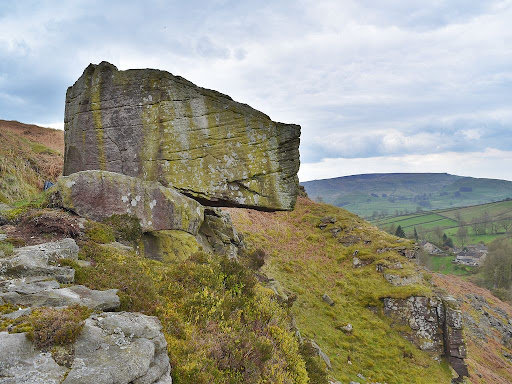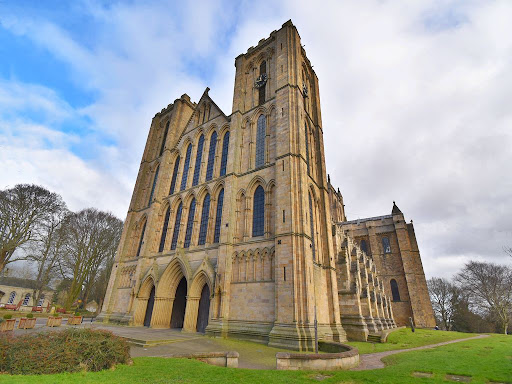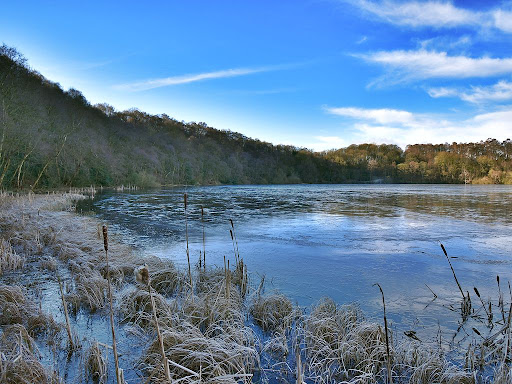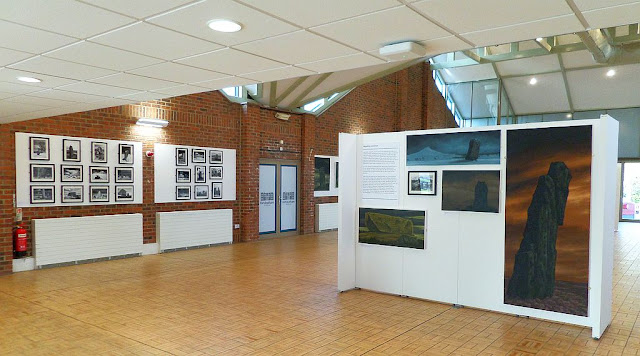The Fairy Stones are located in a valley at Burdale, 3 mile to the north of Fridaythorpe in East Yorkshire.
The Fairy Stones are a group of large rocks sitting high up on the valley side. The valley itself is called Fairy Dale, and the Fairy Stones are the only visible rocks in that part of the valley. The stones are pieces of a weathered outcrop of a Breccia type rock, made up of chalk, limestone, and flint fragments, fused together.
The fairy name of the stones and the dale point to this location being connected with the fairy folk in the past, however, any folklore about them appears to have been lost. The Fairy Stones name does appear on the first edition OS map (1854), and in his 'East Yorkshire Folklore' John Nicholson notes that ...
"The superstitious among men, in order to see their future love, would hie them to the fairy stones, at Burdale, and there, with the full moon brightly shining, at midnight, would see the one who should be all the world to them." (Nicholson, 1890)















